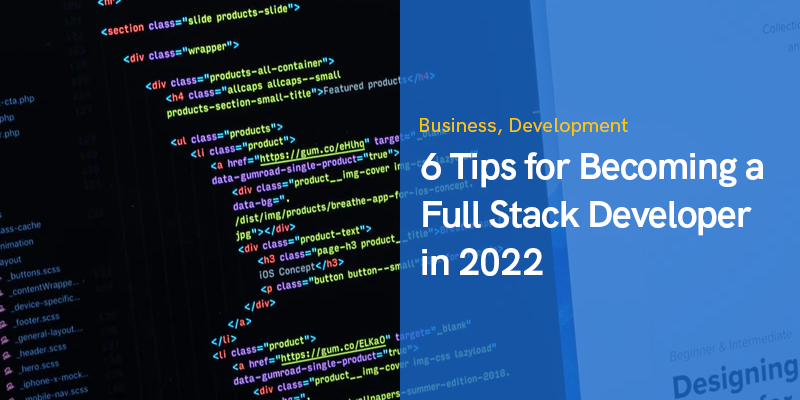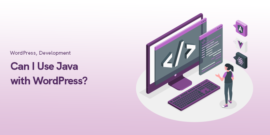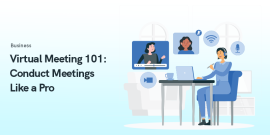
6 Tips for Becoming a Full Stack Developer in 2023
Full-stack developers' duties vary because they can specialize in various coding languages or front- and back-end experience combinations. To become a full-stack developer, understand the back-end and front-end concepts.
As a front-end developer, you’ll create and optimize visible website parts to make components responsive to various viewing environments.
A front-end developer builds and refines the internal software responsible for operating a company’s servers, databases, and proprietary software. A full-stack developer can address both the front- and back-end concepts.
A full stack developer requires technical skills, writing and communication skills, analytical skills, and creativity.
In this article, we’ll outline six tips for becoming a full-stack developer.
Start with The Basics
Familiarizing yourself with multiple designs and programming languages can help you gain back and front-end knowledge while understanding design and development.
Familiarize yourself with design coding, and learn how different servers and web applications communicate with each other.
However, when it comes to programming, there are too many and it can be challenging to know where to start. You should start with a popular programming language, which makes JavaScript a good place to start since it’s the most popular programming language.
It is also easy to learn, which makes it ideal for newbies. Click here to learn JavaScript.
Pick an Area of Specialization
Now that you've learned design and development basics, it would be good to specialize in a particular area, including database management, server administration, and web development.
This helps prospective employers decide whether you're a good fit for their needs. Choose an area you love and develop your knowledge and skills to become an expert.
For instance, you can focus on JavaScript, which can run on both front- and back-end.
Choose a Learning Format that Suits You
Thanks to technology, learning has become more accessible. However, picking the ideal one can be daunting, mainly with many different educational routes.
Consider joining coding boot camps, which are usually short-term, but with intensive training sessions that equip you with all the necessary industry skills, make critical industry connections, develop a magnificent coding portfolio, and prepare you for the job market.
Self-guided courses are more flexible and cheaper than boot camps, and based on the learning platform you choose, you can benefit from extra resources, active learning communities, and instructor support. You may also opt for degree programs and books, and tutorials.
Practice
After acquiring the necessary skills and knowledge, it’s time to refine what you’ve learned.
Master coding basics and keep moving through deployment and design.
You can write code, design them, and access them from various networks and devices.
This can boost your knowledge and skills to prepare for the job market.
Build a Network
Considering how technology is constantly evolving, it’s good to understand the trends, new software, common problems, and prototypes in the field.
You can join professional organizations and social communities to stay up-to-date with the latest programming news and software. Through networking, you can find people to help you understand the areas you struggle with.
Build a Portfolio
A portfolio helps you showcase your skills to prospective clients and employers. Use the projects you're proud of to create an excellent first impression.
When displaying your work, describe the technologies applied and your role in the project. You can also include ongoing projects.
Endnote
Full-stack development is a high-demand and versatile career with good pay and creative flexibility.
Use these tips to become a full-stack developer.
Recommended Posts

Can I Use Java with WordPress in 2024?
March 25, 2024

Top 6 Free Windows Screen Recorders for Your Personal Blog
February 8, 2024

Virtual Meeting 101: Conduct Meetings Like a Pro
January 1, 2024
